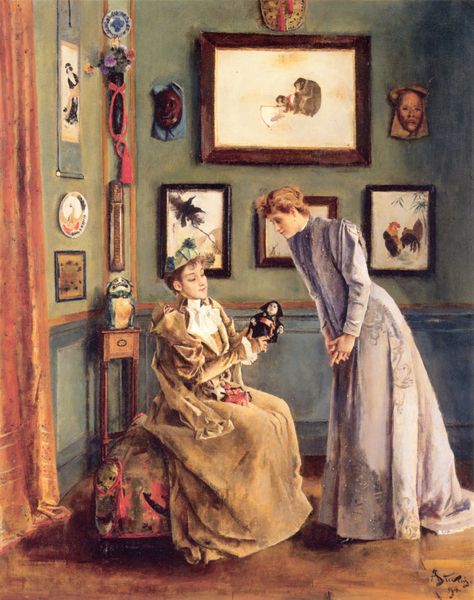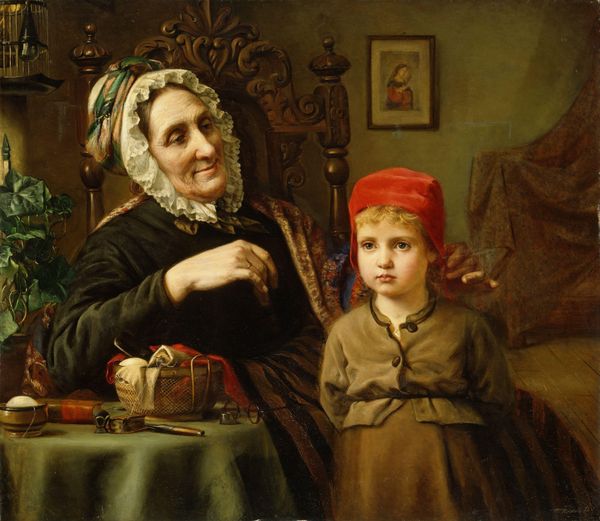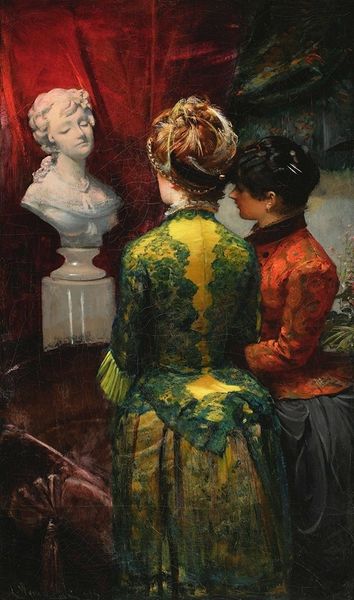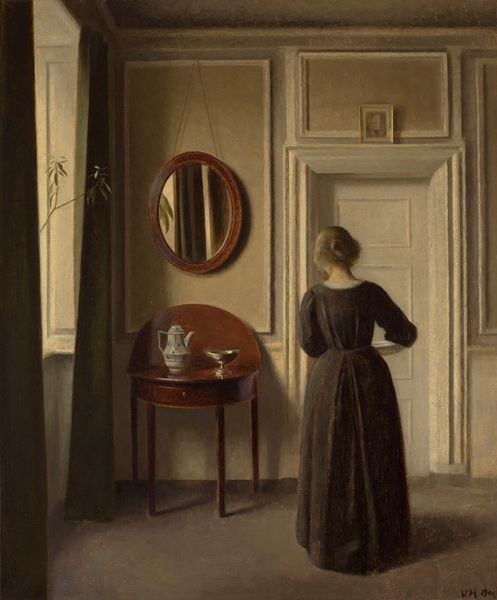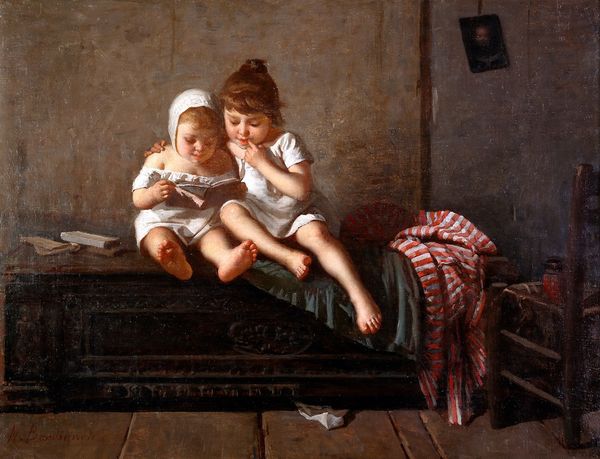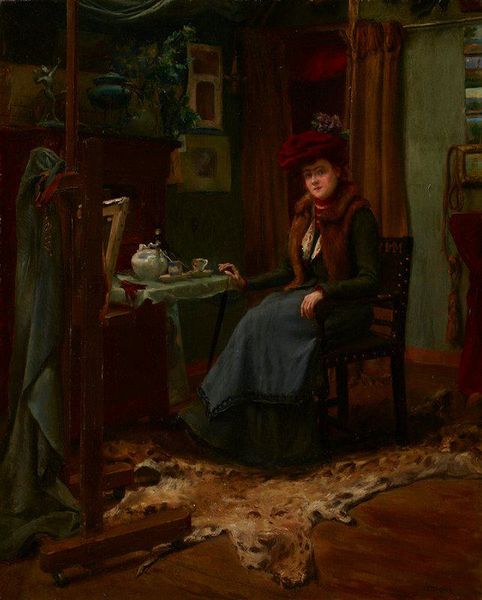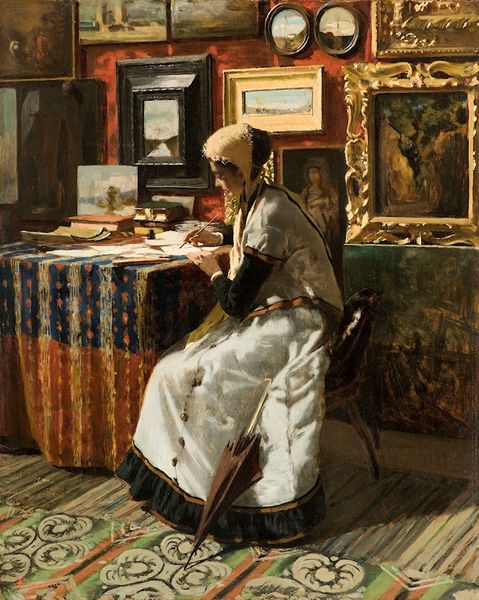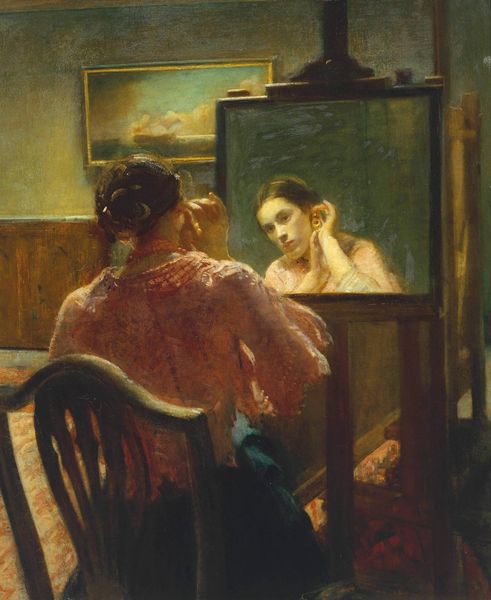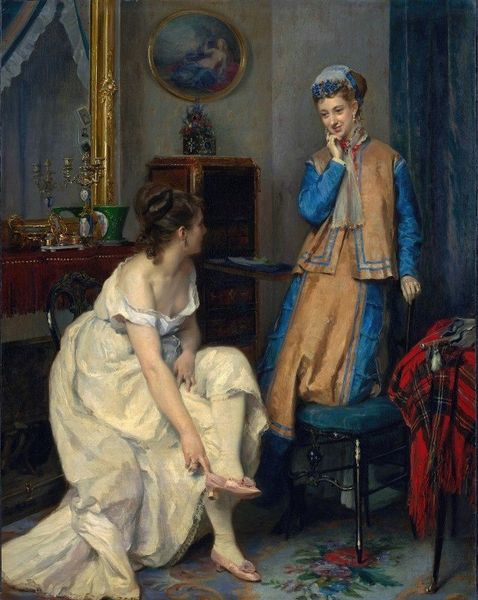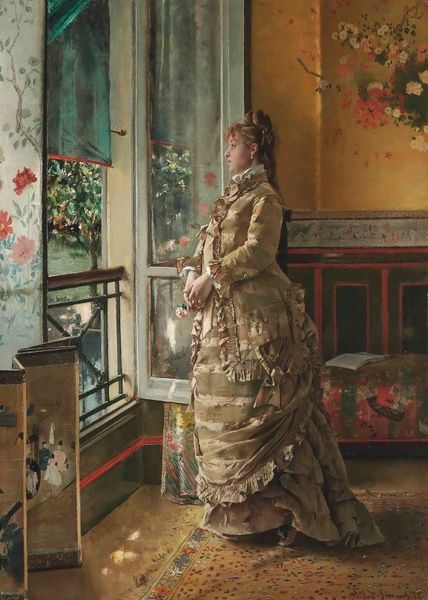
Copyright: Public Domain: Artvee
Curator: Alfred Stevens painted "Looking at a Painting" in 1891. Oil on canvas. I’m struck immediately by the dynamic between the two women depicted within the frame. One is standing, almost imposing, while the other is seated, gazing at a painting. There’s a real power play visualised. Editor: I see that immediately too. But I think that power dynamic is really part of the story here, reflecting on women's roles and artistic patronage at that time. It’s worth remembering the relative exclusion of women from art institutions at the close of the 19th century. How often could women dictate tastes or offer commissions in comparison to men of the time? Curator: Absolutely, this interior scene—we see hints of other framed pieces in the background—it suggests this might be an artist's studio or salon, a space typically gendered male. By placing two women as the protagonists, Stevens is perhaps subverting those norms. We should note the seated woman is, perhaps, in the act of artistic appreciation or critique; her gaze is knowing. Editor: Knowing, or perhaps carefully controlled by the expectations of a patriarchal system? How often would women’s taste be openly criticised? One almost suspects her apparent scrutiny of the art on the easel might conceal the effort to impress someone, or appear suitably intellectual. The other woman, the standing one, is harder to ‘read.’ Her perspective is averted. I find it an uncomfortable image to examine. Curator: The tension in their body language is so palpable! And the detail in their clothing is fascinating – the bustles, the hats… there is a lot of work done there to indicate social positioning of the sitter in line with norms. Editor: It also offers us access to social commentary. While the Realists were busy capturing working-class lives, Stevens gives us a snapshot into the tastes and pastimes of the bourgeois, of those with the financial capital to support the arts. Note also how, for all their implied wealth, the interior behind them appears oddly constricted and confined; it’s no grand stately home, for instance. Perhaps reflective of a new middle class? Curator: It speaks volumes about how even leisure could be performative in this historical context. Stevens offers not just a portrait, but a moment pregnant with implications of gender, class, and the politics of looking. Editor: Yes, a valuable reflection on social structures, framed neatly, by an engagement in high art practice! Food for thought.
Comments
No comments
Be the first to comment and join the conversation on the ultimate creative platform.
